Eilean Aigas: a Scottish island that has been the retreat of aristocrats, authors and international business moguls
Scots-Canadian tycoon Brendan Clouston supposedly invested some £20 million in creating a spectacular mansion on a 67-acre island in the River Beauly in the Northern Highlands.
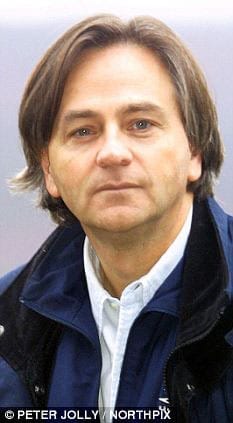
Mr Clouston, a telecoms tycoon and friend of Bill Gates, bought Eilean Aigas for £3 million from a Malaysian named King Chong Chai in 2001. Prior to that, the estate was owned by the Frasers of Lovat until 1995 and their best known tenant was Sir Compton Mackenzie OBE (1883 – 1972), the Scottish Nationalist author of Whisky Galore and The Monarch of the Glen.
Considered one of the greatest authors of the 20th century by many, Mackenzie was a major influence on F. Scott Fitzgerald, George Orwell and Cyril Connolly. Of one of his works, Sinister Street, John Betjeman went as far as to say: “This has always seemed to me one of the best novels of the best period in English novel writing” whilst Henry James added that he “thought it to be the most remarkable book written by a young author in his lifetime.”

Mackenzie was a man who was described as a “specialist in islands” in a 1931 article in The Cairns Post. Variously he found himself on the Greek islands during the First World War, lived on Jethou and Herm in the Channel Islands, Capri in Italy and later on Eilean Aigas. Passionate about his Scottish roots, thrice married Mackenzie took a tenancy from the Fraser family in 1930. He and his first wife, Faith Stone (1905 – 1960), paid £450 per annum to their aristocratic landlords and of their time on Eilean Aigas, Stone commented:
“On the north side rugged purple and grey cliffs flanked the narrow, turbulent river, small pine trees hung at all angles over the water from rock crevices. Walking against the stream up on the grassy path of the cliff, you suddenly went downhill and came upon the same river tranquil as a pool…. Dear God! This a garden in a dream.”

On a negative note, the couple found that they had to keep their island home, a former, hunting lodge, heated 7 months out of 12 during their three-year tenancy as it was so cold and also suffered problems such as ceilings collapsing. In 1933, in violation of their lease, they left and eventually built their own home on another Scottish island, Barra.
Following the breakup of the Fraser Lovat estates in 1995, Eilean Aigas was sold to a Malaysian tycoon of Chinese extraction named King Chong “K. C.” Chai for £600,000.
After moving to the British colony of Malaya with his parents as a child to escape the poverty of their native China, K. C. Chai came into many Scottish rubber planters. In due course, as the family became friendly with many and as their wealth grew, they took holidays in Scotland. Both K. C. and his brother, Sin, like their father before them, fell in love what they viewed to be a “serious country with serious people.”
K.C. Chai spent several months a year on Eilean Aigas in the years after his purchase but for him it was just the starting point of a much grander plan. Here was a man who went on “spending spree” that included one of the country’s grandest hotels, Inverlochy Castle. In 1996, a year after buying his island retreat, when he purchased another large house at Fiscavaig on Skye, the seller, Calum Neish, commented:
“I think he bought my house on a whim, like he buys many things. I am told that he was once driving through Inverness and spotted a Daimler, which he persuaded the owner to sell by making him an offer that could not be refused.”
The family portfolio is now run under the banner of ICMI and their current listing of owned and managed properties also includes the Alladale Wilderness Reserve, The Atholl, Blanefield House, Greywalls Hotel, Inver Lodge Hotel and Rocopool Hotel in Scotland. They also own farms in Canada and Australia and are certainly people of significant influence in the Highland region. K. C. Chai, with so much else to keep him occupied in Scotland, sold Eilean Aigas in 2003 and therewith embarked the estate’s grandest chapter to date.
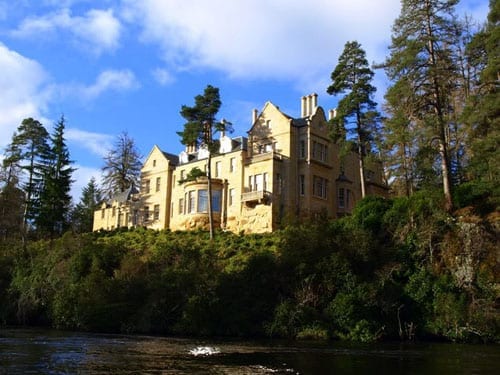
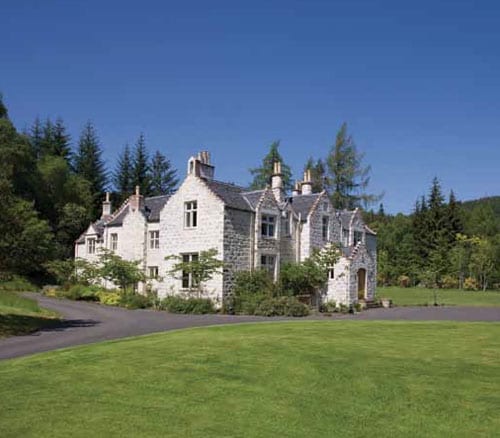
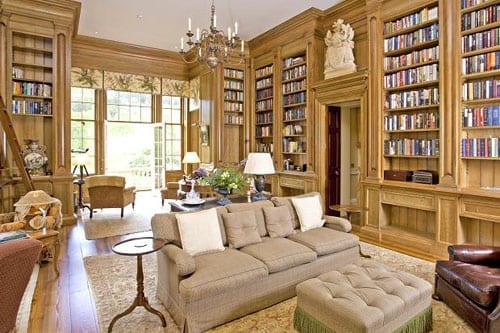
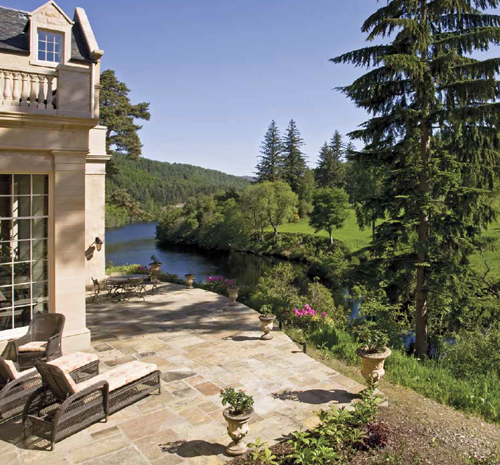
The purchasers, Brendan and Judy Clouston, purchased approximately 60 acres initially and unsatisfied with the existing house, they bought further land taking the plot to a total of 547 acres. Their next step was to set about gaining planning permission to construct a traditionally styled 28,000 square foot mansion.
Brendan Clouston is himself a businessman who was born in Montreal in 1953. His family are naturalised US citizens and after graduating from the University of Toronto in 1975, he completed an MBA at the Ivey Business School in London, Ontario in 1979. Clouston became a director of finance of Denver based Tele-Communications Inc. (TCI) in 1983 and rapidly rose through the company, eventually taking the role of chief operating officer in 1991.
At around this time, after a threat to TCI’s chairman, John Malone, from John Kaczynski, better known as the Unabomber, security around Clouston and his fellow directors was significantly increased. It is for this reason, reported the The Telegraph’s Jon Stock in a September 2000 article, that Clouston has since been “tightly wound” whilst in 2011 the Daily Record went as far as to add that he is considered “secretive.”
Under Clouston’s plainly able guidance, TCI grew into a vast conglomerate specialising in domestic video, telephony, satellite and internet operations but it was for the major investments that he made that he is remembered. These included a large telecommunications carrier named Teleport which was sold to AT&T in 1998; Starz, a leading pay movie service and Sprint PCS, a wireless company.
In 1998, a year before TCI was sold to AT&T, Clouston retired to focus on his own private investments and other wireless infrastructure projects. It was also at around this time that he and his family relocated to the UK after purchasing an 1840s mock-Jacobean manor that had been run as a hotel in Dorset, for £1.2 million in 1997.
In Chedington Court, Clouston found a new project and duly bought up the property’s former coach houses, the old vicarage, various cottages and a modern bungalow for his in-laws. He was outbid on the estate’s lodge house and an offer for the former church was also rejected but it was for setting off fireworks to celebrate his wife’s birthday in June 2000 that allegedly left “a village at war.”
“I lived through the Blitz in Manchester and it reminded me horribly of it,” whined Pam Arnold-Forster a sheep farmer. Locals were “terrified” and another neighbour, Sir Richard Cooper, who tempered his remarks with the comment: “Curiously, he’s a lovely person,” lost a bullock when it “ran headlong into some barbed wire, nicked a testicle and bled to death.” Some Jacob lambs “sprained their shoulders” and a “dog died ‘for at least three minutes’.” The Telegraph reported that the aftermath was equally unpleasant as:
“Shortly after the display, all the men in the village gathered like medieval serfs and banged on the gates of Chedington Court, prompting a visit from the local police.”
There’s nothing, after all, worse than a bunch of angry yokels.
It hadn’t helped that Clouston’s building work had brought up to 70 vehicles a day to the village for 18 months and an 870,000 gallon lake that he’d constructed had, according to neighbour Ian Alderman, resulted in “three earthquakes during the construction work.” Frankly, Clouston, who supposedly spent £6 million on the project, plainly hadn’t taken the time or had the inclination to understand the ways of the parochial English busybodies and even his generous gifts to the community didn’t go down well. A contribution to the village hall and an open evening at the local pub, where the locals “could have a drink and some food on him,” resulted in remarks such as:
“I think if you want to be a squire, you have to treat villagers differently, but, you see, Mr Clouston is not English. An old English squire would have totally different manners. He wouldn’t hide himself away. He would have more respect for the people who live here. If he wants to live in such a small community, it’s a good idea to communicate. Of course, I respect his privacy, but I hate laurels.”
Frankly, it sounds like Mr Clouston would have done better to have just listened to a few episodes of The Archers but he was not deterred. A year later in 2001 he headed north and added Eilean Aigas to his collection and after the land buying spree, he began construction of the vastly impressive Eilean Aigas House.
Constructed entirely in local sandstone, the vast residence include 22 “signature 20ft stacked chimneys,” as well as hand carved stonework, 15ft high ceilings and intricate plaster work. Building took 6 years and was completed in 2007.
As would befit a media mogul, the 8-bedroom house includes a cinema, games room and even a hair salon. Other additions numbered an estate office with keeper’s flat and a gate lodge but though planning permission was granted for a boathouse, this is yet to be completed.
One would have thought Clouston and his family, who donated $4,600 to Senator John McCain in 2008, would have subsequently been left to enjoy the tranquility of the Highlands, but this was not to be. The beautiful landscape of the Eilean Aigas estate that he’d so carefully restored was disrupted when Scottish & Southern Energy (SSE) announced plans to install a 400kv overhead electricity transmission line featuring around six hundred 200ft high towers close to the new mansion.
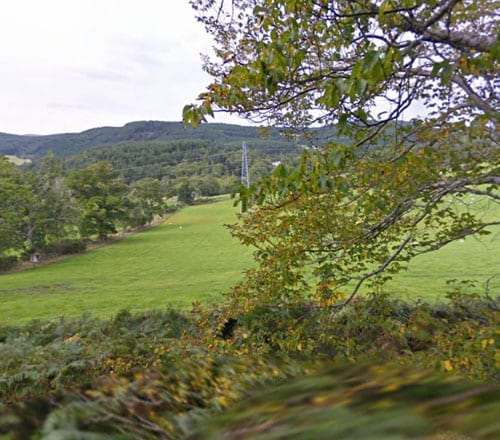
Rightly questioning the need for this unsightly intrusion, Clouston unsuccessfully funded a legal challenge and even withheld selling a 245 square metre piece of land required by SSE for the project. Eventually, however, he sadly lost and placed the house on the market earlier this year for less than he’d spent on it. He stated the decision was partly because of the power lines but added:
“I have decided to sell Eilean Aigas because my wife and I have found a new property development project in Guernsey. We love Inverness-shire and have made wonderful friends here, so we’ll miss many things about our life in the Highlands.”
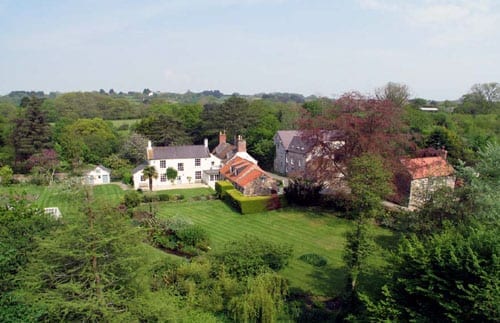
A planning application was submitted by the couple on a property named Moulin de Haut, Rue Paintain in the Talbot Valley of Guernsey in April 2012. It had previously been on the market with Martel Maides at a price of £4,950,000 and was described as “one of the most charming properties in the Channel Islands.” With plenty of scope for many an alteration, it does indeed look like quite a project.
History is a most curious thing. Sir Compton McKenzie left the Channel Islands to escape to somewhere more peaceful in Eilean Aisag, whilst now it is Brendan Coulson who is going the other way to escape the buzz of the blessed power lines.
A price of £15 million is sought for Eilean Aigas.
For more details on Eilean Aigas, Inverness-shire, IV4 7JP contact Knight Frank’s Edinburgh office on +44 (0) 131 344 0919.
View full details at: http://www.primelocation.com/for-sale/details/21006285?search_identifier=6db55575cebaffb4e122f4d1440e9b44

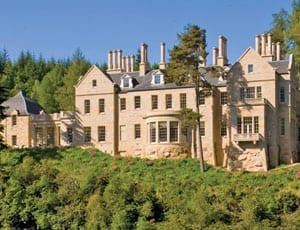








£5m has been sliced off the price (August 2013). It’s now down to £10m: http://www.primelocation.com/for-sale/details/28679022
And now down to £3m. I really feel sorry for Mr Clouston who seems to be someone who has tried very hard to do the right thing and add some beauty and merriment to the world.
This rather gauche sneering at those living in an English village, concerned about the antics of a rather odd chap, doesn’t seem terribly good form
Mr Clouston had a wonderful vision and has left a beautiful legacy for some very lucky person. If only !!! Away to buy a lottery ticket. Nice to dream
Don’t you see what he is doing? He and his wife are hopping around Britain restoring great properties and building masterpieces. He is secretly leaving a magnificent bequest to the British people and they don’t even know it.